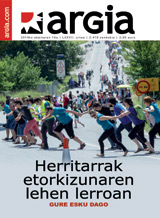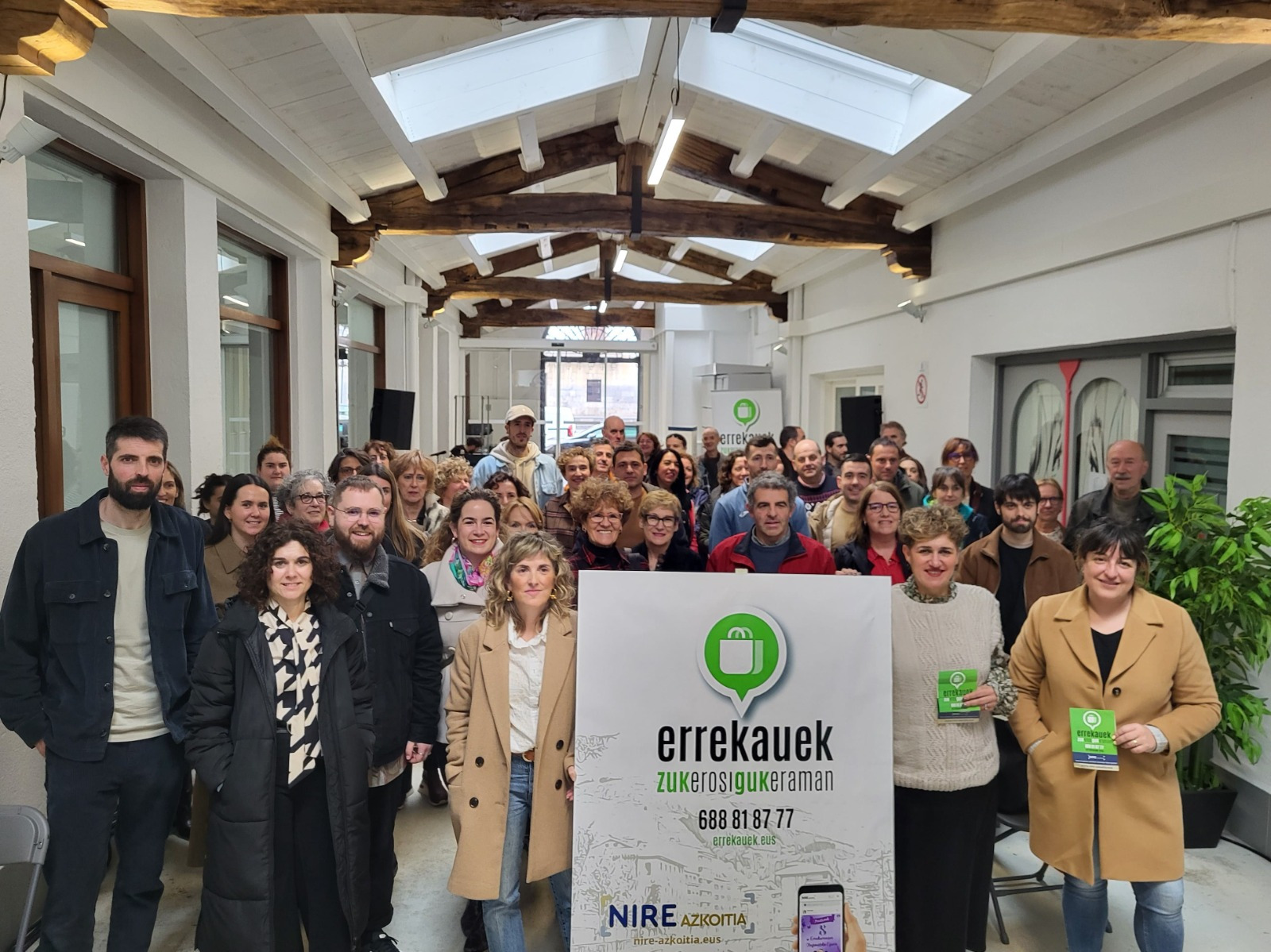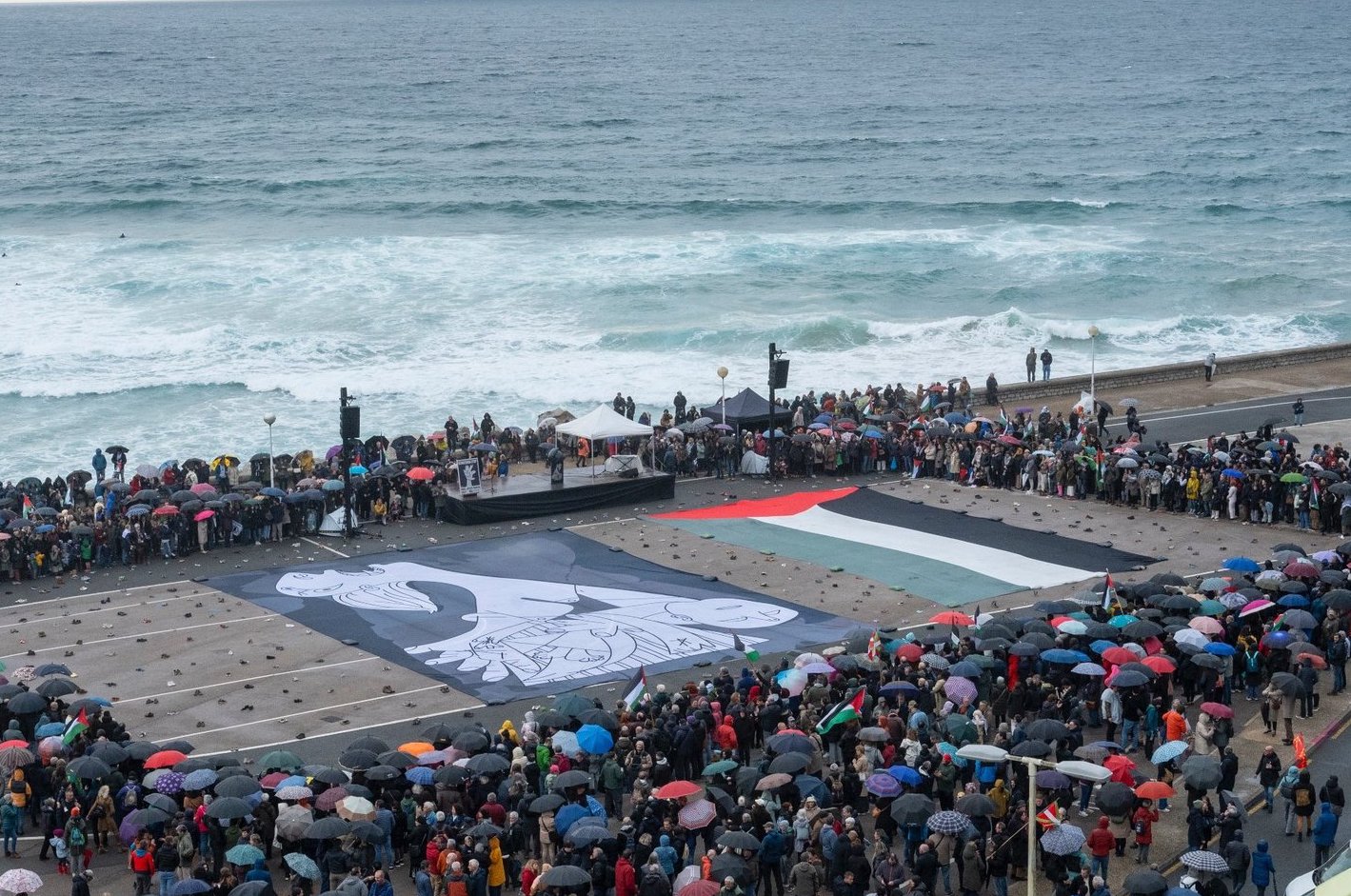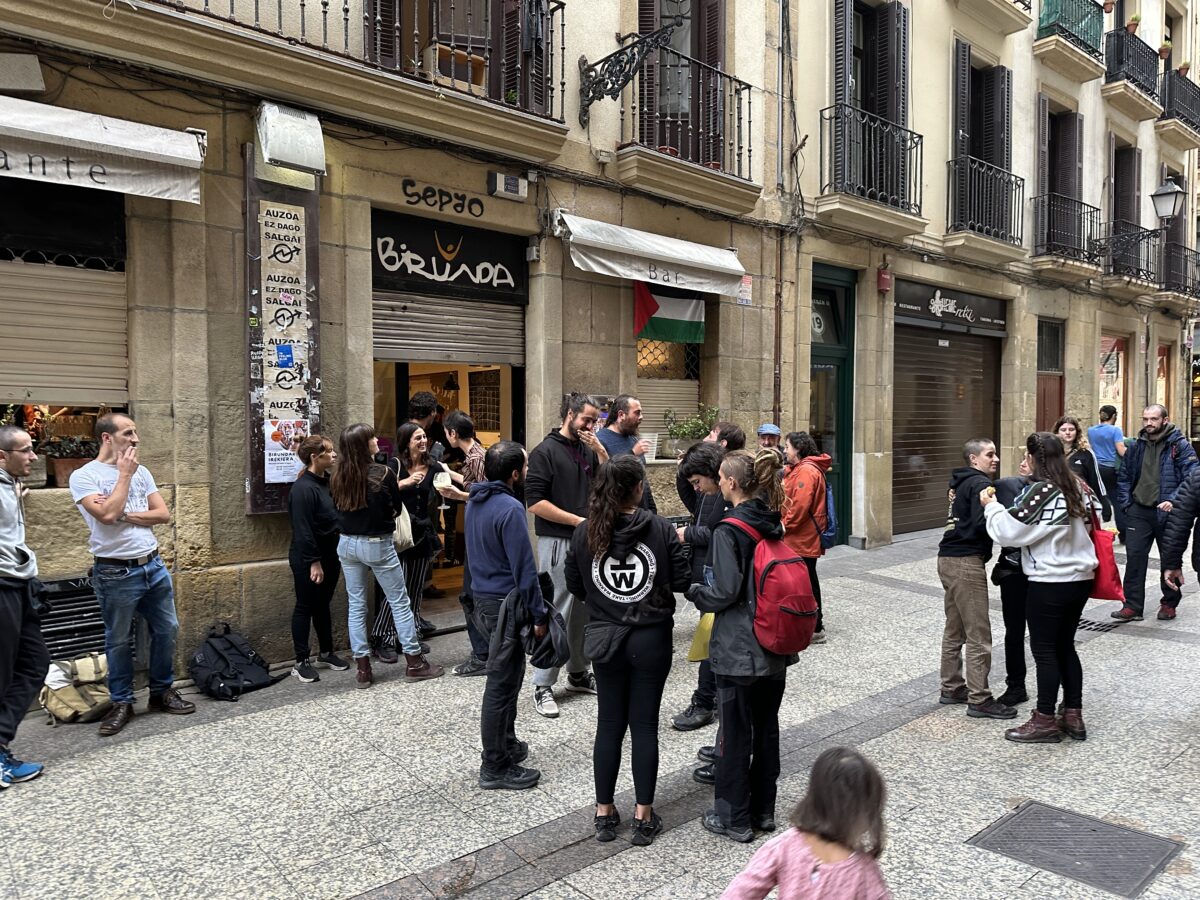Behind the rocks, over the sea
- From skirt to skirt. From the pier of Hondarribia, looking at the drops of Pasaia farolara.Ur through the rocks. Among them, Jaizkibel, a large rock box. Basing yourself on the treasures of history. Space protected by the Natura 2000 network. Along the way, the lights and shadows of the headlights, the echoes of wars and the tireless singing of nature await us. Swimming in the fields, in a mountain where you can touch the sea with your fingers.
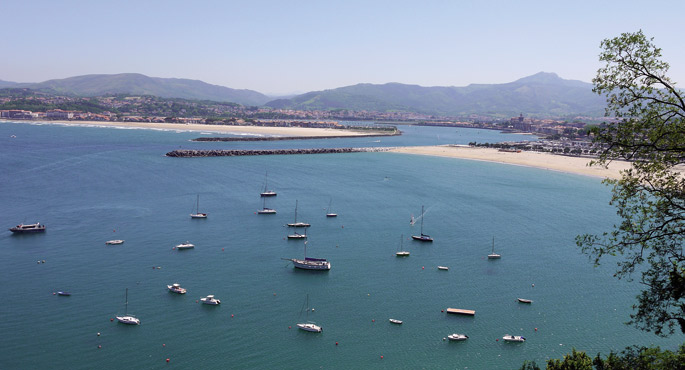
We will start the tour at the pier of Hondarribia. The small Bateles dance alongside the large Tuku-Tuku, Pittar and Kuku Harri vessels. We left the Fishermen's Brotherhood on the right to continue searching for the driver of the night boats. In Cape Higer and in the lighthouse we have the first stop.
Few have the possibility to visit the lighthouse inside, as a special permit is needed. It's beautiful to go up the stone stairs and feel like a wasp. The predominant blue and the green-dyed area, the ferns dress Higer. From the top of the lantern, the island of Amuitz appears as small as beautiful. In front of him, we can see the vast coast of Lapurdi.
Down the stairs we head to the campsite to take the path that starts at the end of the road. We continue along the coast towards Talaia, which connects the coast. We will find many trails that lead to semi-detached streets. If you want to look for lamias, go ahead, but watch for tide changes.
Following the main road we will reach a junction. Along the path that descends to the right we head to the Port of Artzu, a place of rest for the Roman ships. The area is also known as the Artzu Mill, by the mill it housed. They are said to be using the force of the Kalara River to grind wheat and maize.
Ecological and geological value
Let us go back as crabs and go back to the crossroads, following the main road to Guadalupe. The road has no loss, and as it progresses, we will see that we are going down an upward path along the hillside of Jaizkibel. We are in an area protected by the international community, with eyes open, because in every corner we have jewelry of great ecological and geological value.
Little by little we will reach the Fort of Guadalupe. It was built for defense in 1900. Although it is practically impossible to know all the secrets inside, we can make a guided tour through the cavities of the fort by the hand of the Arma Plaza Foundation of the City Hall of Hondarribia.
If we look from the inside out, the Basilica of the Virgin of Guadalupe, built in the 15th century in the hull, is well known. The history of a bar near the basilica is not so well known. The dwelling, also known as Justiz or the Whole Bello, became an old refuge for King Sancho Abarka, as the king fell in love with one of his servants.
History of the Matxin de Artzu
Looking outside the bar and on the white poster, we can read in green the name of the following hamlet to visit: Artzu. The known house was the feat of his son Matxin. Around 1280, during the battle of the kings of France and Castile in Hondarribia, Matxin helped the Castellanos. He knew the surrounding area well and thought about hanging the helmets of the horses so as not to make noise at night. The French were conquered by Castilian troops and, thanks to Matxin, the king of Castile gave his son Artzu a shield.
At the front of the cottage the Upper Jaizkibel is signaling to us. To climb up, we return to the main car park of Guadalupe, from where we turn north-west. It crosses the road and the road rises considerably. On the road we will find towers built during the Carlist War of 1872 and 1876. On the top of Erramotz, from the Torre de Santa Barbara, it seems that someone is spying on us. From the viewpoint of the bay of Txingudi you can enjoy a unique panoramic view of the bay.
In view of the telecommunications antennas, the top is getting closer and closer. Once above, we will have to pass by the Tower of Xangasi and two other towers and we will go down the path to the right until we reach the road. The Alto de Mitxintxola is the last climb of the tour. From here you can see the town of Pasaia. We must head west and follow the white lines. Caution should be exercised in abrupt crests. Following the road has no loss. The traffic light and the lantern of the port indicate the destination: The sweet Pasaia skirt.
Jauzi Ekosizialeko kideek antolatzen duten bigarren edizioa da. Euskal Herriko trantsizio ekosozialak "inoiz baino premia handiagoa" duela adierazi dute, "datozen aldaketa sakonen aurrean trantsizio justua nahi bada".
Hego Euskal Herriko lau hiriburuetan egin dituzte manifestazioak. Israelek Palestinan egin duen eta aurrera daraman genozidioarekin kolaboratzen duten enpresei laguntza publikoa emateri uzteko eskatu diete Nafarroako Gobernuari eta Eusko Jaurlaritzari.
Usurbil herri zaintzaileagoa izateko lankidetzan ari diren herrikide, eragile eta erakundeen talde argazkia duzue albiste honi atxikitakoa. Larunbatean Sutegin egindako "Usurbil, herri zaintzailea" izeneko ekitaldian atera genuen. Norabide horretan herri hau egiten ari... [+]
Duela lau urte abiatu zuten Azpeitian Enkarguk proiektua, Udalaren, Urkome Landa Garapen Elkartearen eta Azpeitiako eta Gipuzkoako merkatari txikien elkarteen artean. “Orain proiektua bigarren fasera eraman dugu, eta Azkoitian sortu dugu antzeko egitasmoa, bere izenarekin:... [+]
Aljeriatik datoz Mohamed eta Said [izenak asmatuak dira], herri beretik. “Txiki-txikitatik ezagutzen dugu elkar, eskolatik”. Ibilbide ezberdinak egin arren, egun, elkarrekin bizi dira Donostian, kale egoeran. Manteoko etxoletan bizi ziren, joan den astean Poliziak... [+]
Pazienteek Donostiara joan behar dute arreta jasotzeko. Osasun Bidasoa plataforma herritarrak salatu du itxierak “are gehiago hondatuko” duela eskualdeko osasun publikoa.
EH Bilduk galdera sorta bat erregistratu zuen Eusko Legebiltzarrean Donostiako Metroaren igarobideko lanen gainkostua argitzeko. Informazio hori atzo jakinarazi zuen Susana Garcia Chueca Mugikortasun sailburu sozialistak.
Joan den asteko kaleratze "ilegala" salatzeko, manifestaziora deitu dute ostiral arratsalderako.
Nortasuna Sarean jardunaldien 10. edizioa egingo dute asteazken honetan Donostiako San Telmon, KomunikaziONA bideguruatzean izenburupean. Egungo komunikazio joerak aztertu eta "alternatiba osasuntsuagoak" topatzen saiatuko dira. Hainbat hizlari gonbidatu dituzte, euren... [+]
Azken astean ezagutarazi moduan, Eusko Jaurlaritzaren Balorazio Batzordeak txosten banatan aitortu ditu estatuaren biktima gisa. Justizia sailburuak ekitaldi pribatu banatan entregatu dizkie dokumentuak.
Trintxerpen hasi eta Donostian bukatu da hainbat kolektibok deitutako XXVIII. Arrazakeriaren Kontrako Martxa.
Milaka pertsona bildu dira larunbat honetan Palestinako herriari elkartasuna adierazteko eta “Israelek Gazan egindako genozidioa” amaitzeko eta Benjamin Netanyahuren gobernuak su-etenari berriro ekiteko eskatzeko. Gernika-Palestina herri ekimenak deitu du martxa,... [+]
Donostiako Amara auzoko Izko ileapaindegi ekologikoak 40 urte bete berri ditu. Familia-enpresa txikia da, eta hasieratik izan zuten sortzaileek ile-apainketan erabiltzen ziren produktuekiko kezka. “Erabiltzaileen azalarentzat oso bortzitzak dira produktu gehienak, baina... [+]
Sare sozialen kontra hitz egitea ondo dago, beno, nire inguruan ondo ikusia bezala dago sare sozialek dakartzaten kalteez eta txarkeriez aritzea; progre gelditzen da bat horrela jardunda, baina gaur alde hitz egin nahi dut. Ez ni optimista digitala nauzuelako, baizik eta sare... [+]
Ustez, lokalaren jabetza eskuratu dutenek bidali dituzte sarrailagileak sarraila aldatzera; Ertzaintzak babestuta aritu dira hori egiten. Birundak epaiketa bat irabazi du duela gutxi.









